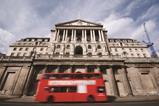According to a recent assessment of 15,000 funds and their Sustainable Finance Disclosure Regulation (SFDR) classifications, research showed that many Article 9 funds might be noncompliant with the regulation’s ‘do no significant harm’ criteria.
Clarity AI, the global sustainability tech platform, conducted the analysis which focused on 750 Article 9 funds that have sufficient information on at least 80% of their holdings.
In the SFDR, there are three main criteria to define a sustainable investment:
- it must contribute to an environmental or social objective;
- it must not significantly harm other environmental or social objectives (DNSH);
- the investee company must follow good governance processes (GG).
To classify an organisation as a sustainable investment it must fulfil all three of the criteria and recent guidance on Article 9 funds suggests that the funds should be comprised of nearly 100% sustainable investments.
While a small share of investments in companies that are not sustainable is expected, Clarity AI found that nearly 20% of the Article 9 funds analysed have more than 10% exposure to companies that have violations of the United Nations Global Compact principles or the OECD Guidelines for multinational enterprises.
The research also showed that 40% have more than 5% exposure.
Patricia Pina, head of product research and innovation at Clarity AI, said: “The classification of funds according to the SFDR guidelines is increasingly used in the markets as a shorthand for communicating that a product is sustainable. However, our analysis shows that some of the Article 9 funds currently in the market might be falling short of complying with the sustainability related criteria.”
She told IPE: “We are already witnessing fund reclassifications, and I expect more of them to come. The SFDR regulation as published initially left room for interpretation regarding sustainable investments and Article 9 requirements. However, the guidance published by the European Supervisory Authorities (ESAs) in June of this year made it very clear that Article 9 funds should only make sustainable investments.
“Given the need for funds to invest in instruments for other purposes, such as cash management and hedging, they stopped short of setting a hard figure as a minimum threshold, but one could infer from the ESAs’ comments that there is an expectation that the amount of sustainable investment made by an Article 9 fund should be close to 100%.”
She noted that Clarity AI’s study focused on DNSH criteria because it is the one where “more clarity has been provided”, adding that the use of principal adverse impact (PAI) indicators was mandatory to demonstrate that an investment qualifies as a sustainable investment.
Clarity AI research found that the Article 9 funds invest in 166 different companies that violate the UNGC or OECD principles. The violations include bribery and corruption convictions (for example, a financial services company pleading guilty in a bribery case), anti-competitive practices (for example, a payments company which was fined by the UK for collusion on prepaid cards), and environmental impacts (for example, a tourism-based company admitted to dumping fuel and food waste along with thousands of gallons of sewage into the ocean).
These violations, which might be escaping fund managers’ attention, are captured by Clarity AI’s controversy model. The model is powered by Natural Language Processing and reads more than 100,000 articles per day from more than 33,000 trusted news sources.
Asked whether she thought the investment strategy of many of these funds would change or be adjusted, Pina told IPE: “What we have seen so far in the market is that the investment strategy remains the same but the funds are reclassified. The sample size as of today is small, but I don’t have any reason to think that the pattern will change in the near future.”
Pina said: “As the market becomes more aware of the EU’s strict sustainability requirements and the SFDR Regulatory Technical Standards (RTS) enter into force in January 2023, I expect to see more fund managers downgrading Article 9 funds. The RTS includes templates for reporting investments’ negative effects on the environment and society, and efforts to mitigate these, which will bring clarity and force discussions around how these Article 9 funds are complying or not with the ‘do no significant harm’ criteria.”
Read the digital edition of IPE’s latest magazine




























No comments yet